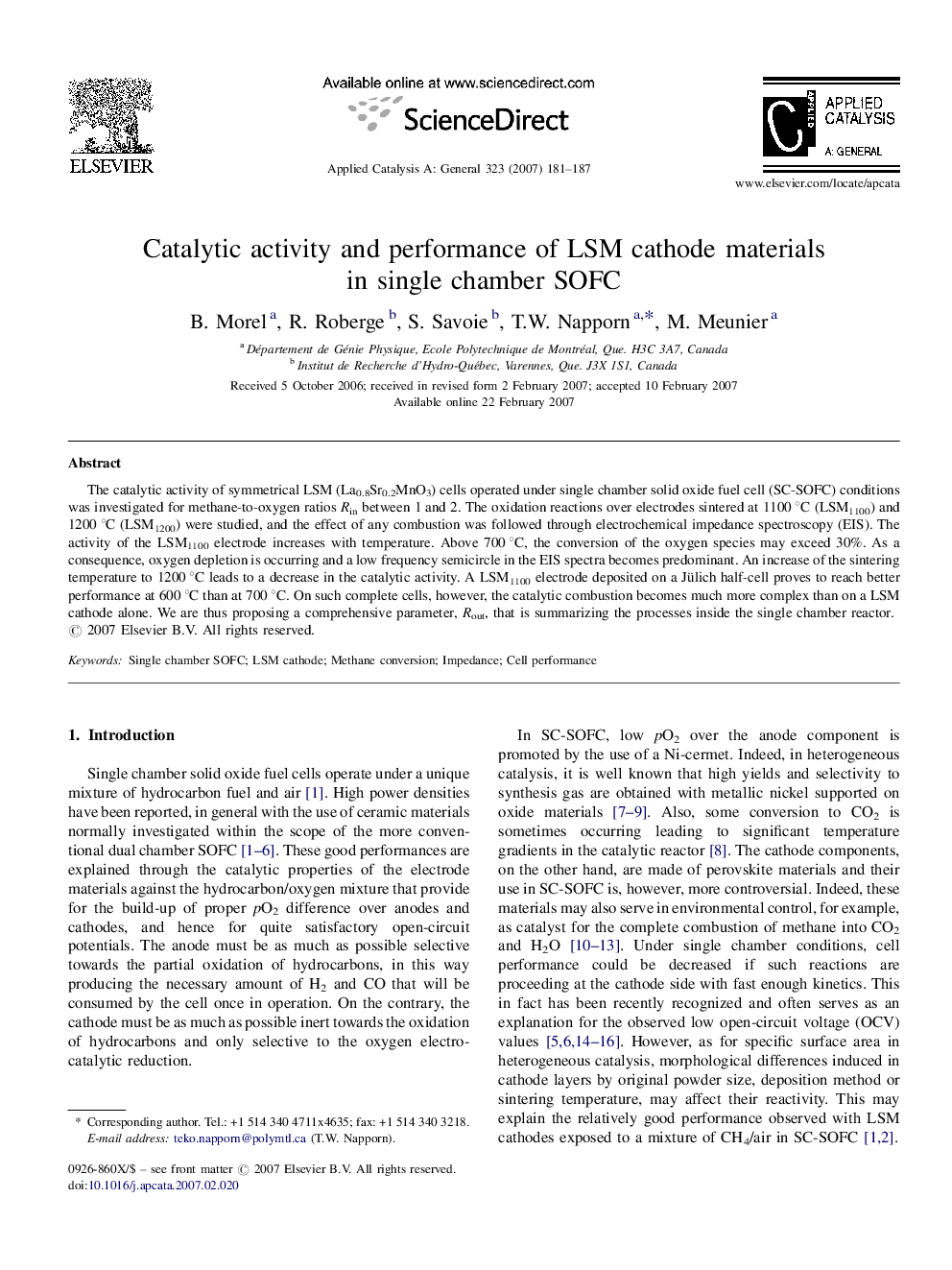| Article ID | Journal | Published Year | Pages | File Type |
|---|---|---|---|---|
| 43621 | Applied Catalysis A: General | 2007 | 7 Pages |
The catalytic activity of symmetrical LSM (La0.8Sr0.2MnO3) cells operated under single chamber solid oxide fuel cell (SC-SOFC) conditions was investigated for methane-to-oxygen ratios Rin between 1 and 2. The oxidation reactions over electrodes sintered at 1100 °C (LSM1100) and 1200 °C (LSM1200) were studied, and the effect of any combustion was followed through electrochemical impedance spectroscopy (EIS). The activity of the LSM1100 electrode increases with temperature. Above 700 °C, the conversion of the oxygen species may exceed 30%. As a consequence, oxygen depletion is occurring and a low frequency semicircle in the EIS spectra becomes predominant. An increase of the sintering temperature to 1200 °C leads to a decrease in the catalytic activity. A LSM1100 electrode deposited on a Jülich half-cell proves to reach better performance at 600 °C than at 700 °C. On such complete cells, however, the catalytic combustion becomes much more complex than on a LSM cathode alone. We are thus proposing a comprehensive parameter, Rout, that is summarizing the processes inside the single chamber reactor.
Graphical abstractThe catalytic activity of symmetrical LSM cells operated under single chamber SOFC conditions was investigated. The oxidation reactions over electrodes sintered at 1100 and 1200 °C were studied. The effect of any combustion was followed through electrochemical impedance spectroscopy. A LSM1100 electrode deposited on a Jülich half-cell was studied and proves to reach better performance at 600 °C than at 700 °C.Figure optionsDownload full-size imageDownload as PowerPoint slide
